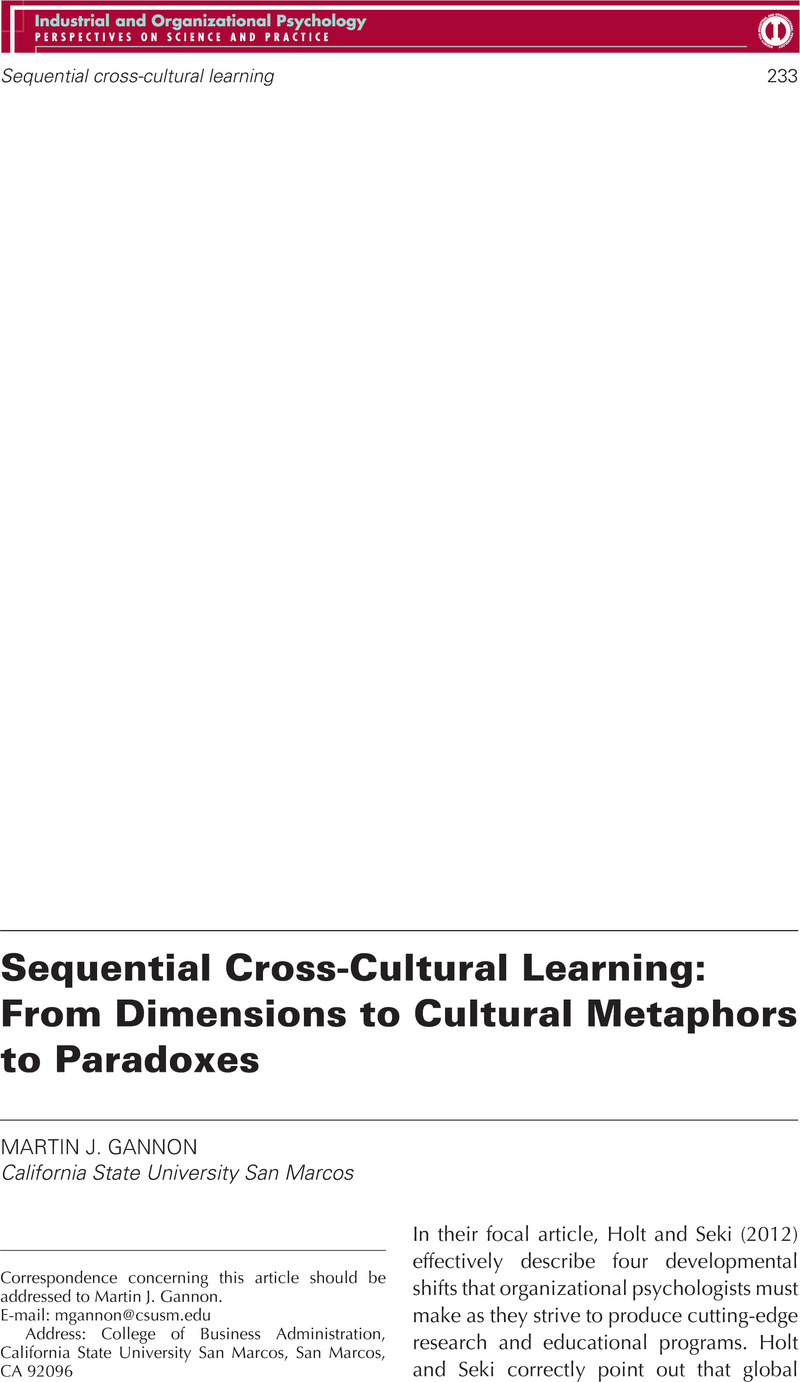Article contents
Sequential Cross-Cultural Learning: From Dimensions to Cultural Metaphors to Paradoxes
Published online by Cambridge University Press: 07 January 2015
Abstract

- Type
- Commentaries
- Information
- Copyright
- Copyright © Society for Industrial and Organizational Psychology 2012
References
- 5
- Cited by


